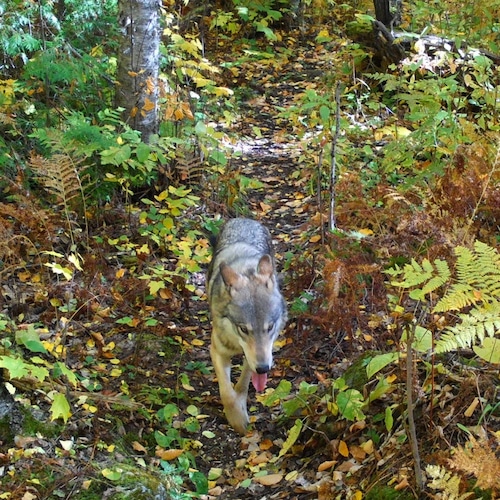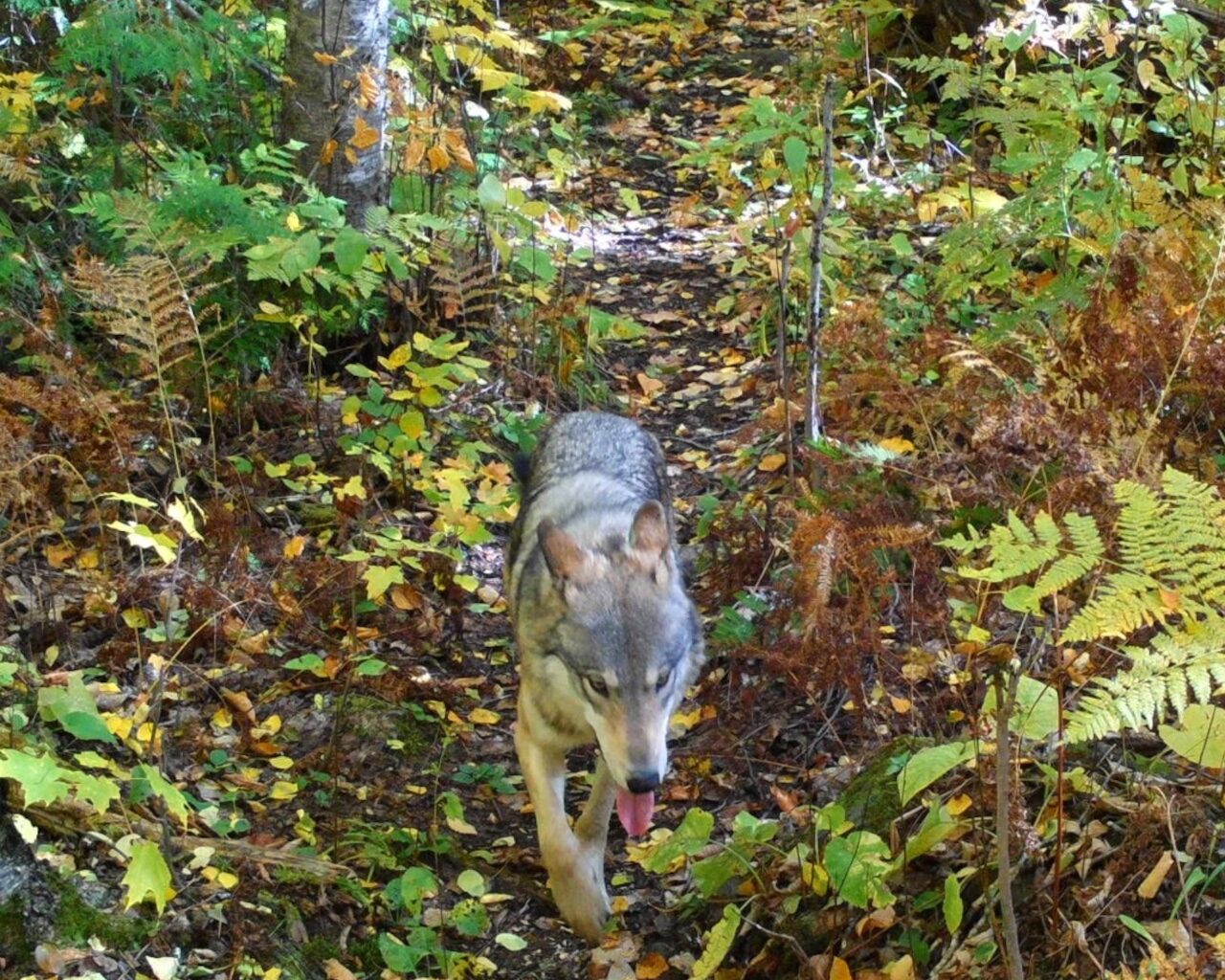ISLE ROYALE, MI – How many new litters of wolf pups were born on Isle Royale in the last year? And are moose numbers continuing to decline in this national park wilderness? We won’t have those answers this year. The longtime Wolf and Moose Study group said it was unable to do its winter flyovers that collect that data because of an unexpected issue with the survey flights.
The group’s 2024-25 study was released today online. Because it had no new annual wolf and moose count numbers to share, the researchers at Michigan Technological University instead focused on the fascinating details of their full year of research on the island. It includes descriptions about wolf and moose activity, other wildlife at the park, and all the volunteer hours it takes to gather data about Isle Royale.
“In a typical year, we conduct field research on Isle Royale throughout the summer and during a seven-week period in winter (from January to early March). Winter fieldwork, which includes conducting surveys to estimate wolf and moose abundance, depends on having highly-specialized aviation resources,” researchers said in the report.
“This year, just prior to the start of the winter field season, our usual aviation resources became unexpectedly unavailable due to extenuating circumstances and there was insufficient time to find a suitable alternative. Therefore, this report does not include new estimates of wolf and moose abundance. Instead, this report highlights elements of field research conducted during the summer. We expect to make up for lost winter fieldwork over the course of the upcoming year and look forward to telling you about new discoveries in the near future.”
Last year’s winter survey showed that for the first time in more than 15 years, Isle Royale had become home to at least four territorial wolf packs. One mega pack on the east side of the island had nearly half the island’s estimated 30 wolves.
Researchers last year also reported at least three litters of wolves had been born on the island. And they noted that the wolf population had “stabilized” in the years since 2018, when the National Park Service began its plan to bring in new wolves to help balance the fast-rising moose population. At that time, the island’s native wolf population had dwindled to just 2 inbred wolves.
As for the moose count, researchers last year estimated there were 840 on Isle Royale – a nearly 60% drop compared to 2019, when the moose population hit a high of more than 2,000 and the big animals’ overbrowsing on island vegetation was a big concern.
The team’s Winter Study has hit some roadblocks in recent years. Last year’s winter research window was cut short by the unusually warm winter. The team relies on ice-covered lakes to land their small ski plane. In 2021, the winter research was mothballed because of the COVID-19 pandemic.
The Isle Royale wolf and moose study is now entering its 67th year. It is the world’s longest-running predator-prey study and takes place on this remote island archipelago in Lake Superior, about 60 miles from the Upper Peninsula’s mainland.
 A wolf walking on an Isle Royale trail. Photo provided by the National Park Service.NPS
A wolf walking on an Isle Royale trail. Photo provided by the National Park Service.NPS
Here are some observations and research highlights from the 2025 study released this week:
The most intensive period of fieldwork activities occurs between early May and mid-June, but it also continues through October:
- College students are trained on how to do scientific field research.
- Volunteer “citizen scientists” participate in week-long Moosewatch expeditions, hiking the island in search of moose and wolf skeletons. Bones on Isle Royale last a long time. Some of the bones found by volunteers are collected for further research at Michigan Tech.
- Moosewatch expeditions for educators help them develop classroom lessons.
Last summer, more than 80 Moosewatch volunteers found the carcasses or skeletal remains of 115 moose, three beavers, a wolf, a fox, a pine marten, and a white-tailed deer.
There is not a white-tailed deer population on Isle Royale, so researchers believe the years-old deer skeleton was something that had washed up onto the shoreline after floating in Lake Superior.
More research notes on the moose skeletons found: “Of the moose carcasses discovered this year, only 22 died in 2024. Eight of those moose were calves, six were adult males, and seven were adult females. All but three of those moose were thought to have been killed by wolves. In other words, 86% of those moose died from wolf predation. For context, wolf predation was thought to be the cause of death for 92% of the moose we examined that died in 2023. Therefore, wolf predation continues to be an important source of mortality for moose in 2024.”
 A moose calf on Isle Royale. Photo provided by Michigan Technological University and the Isle Royale Wolf and Moose study.MTU
A moose calf on Isle Royale. Photo provided by Michigan Technological University and the Isle Royale Wolf and Moose study.MTU
Researchers heard and saw wolves last summer during their data collection period.
“Summer was distinctive for the unusually high level of wolf activity near Rock Harbor and several campgrounds at the east end of Isle Royale,” researchers wrote. “Wolves were seen regularly around the wolf-moose project’s summer basecamp at Bangsund Cabin and by fieldwork teams and park visitors at the east end of Isle Royale.
“One pack had killed an 8-year-old male moose to the northeast of the Rock Harbor Lodge, which they repeatedly visited. Wolves regularly passed through the developed area and attempted to access food and food waste in dumpsters and at campgrounds.”
“In response to this, the National Park Service (NPS) increased hazing operations to move wolves away from these developed areas.”
After Isle Royale put new rules in place last year to lessen contact between hikers, park visitors and the island’s wolves, this year park officials changed the food storage requirements for island guests.
If you purchase a product or register for an account through a link on our site, we may receive compensation. By using this site, you consent to our User Agreement and agree that your clicks, interactions, and personal information may be collected, recorded, and/or stored by us and social media and other third-party partners in accordance with our Privacy Policy.
